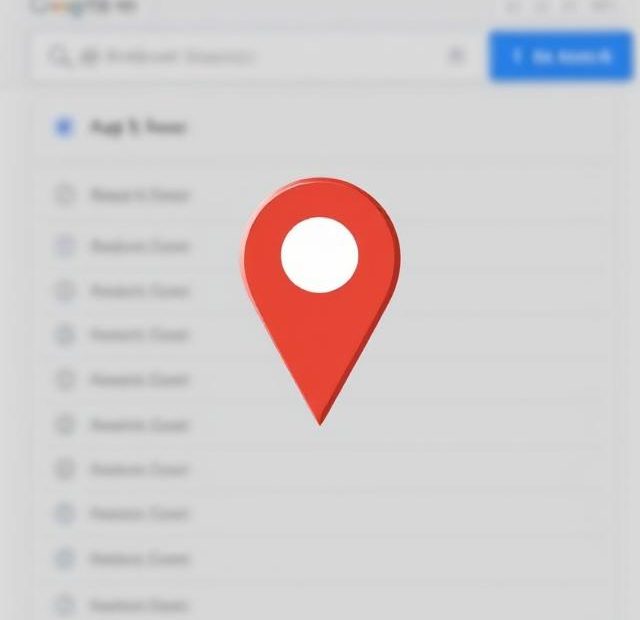When it comes to local SEO in 2025, your Google Business Profile (GBP) — formerly known as Google My Business (GMB) — is your digital storefront. One of the most overlooked but most important aspects of your GBP setup is selecting the right categories.
GMB categories are not just labels; they tell Google what your business does and help you appear in the Local Pack, Google Maps, and relevant local search results.
So, how do you choose the best GMB categories for SEO success? Let’s dive into how they work, why they matter, and how to pick the right ones to dominate local search.
What Are GMB Categories?
GMB categories define what type of business you are. They help Google match your listing to user queries by associating you with specific industries or services.
For example:
-
A bakery might choose “Bakery” as its primary category and “Wedding Bakery” or “Cake Shop” as secondary categories.
-
A dentist might pick “Dentist” as primary and add “Cosmetic Dentist” and “Emergency Dental Service” as secondaries.
As of 2025, Google offers over 4,000 categories, and they update them regularly based on user behavior and industry trends.
Why GMB Categories Matter for Local SEO
GMB categories influence when and where your business appears in local search results.
Here’s why they’re critical:
-
They help determine Local Pack visibility
-
They affect your ranking in Google Maps
-
They influence voice search results
-
They define which attributes and features your listing can display (e.g., “women-led,” “offers delivery”)
-
They determine the services and booking options available on your profile
Choosing the wrong category means your business might not show up at all when people search for your services — even if you’re nearby and offer exactly what they need.
Primary vs. Secondary Categories: What’s the Difference?
Primary Category
This is the most important category and should describe your main line of business. It carries the most weight in ranking. Google allows only one primary category, so choose it carefully.
Secondary Categories
These support your primary category and reflect additional services or specialties. You can add up to nine secondary categories, but don’t go overboard. Only add categories that genuinely match your business offerings.
How to Pick the Right GMB Categories for Local SEO
Let’s go step by step.
1. Know Your Core Service
Your primary category should reflect your main business focus. Think about what customers would Google to find you.
Example:
If you’re a roofing contractor, don’t choose “Construction Company” — choose “Roofing Contractor.”
The more specific, the better. Google has very granular options now, like:
-
“Dog Day Care Center”
-
“Laser Hair Removal Service”
-
“Drive-Thru Coffee Shop”
Use them.
2. Use Competitor Research
Want to know what’s working locally? Spy on competitors who are ranking well in the Local Pack.
Here’s how:
-
Google your target keywords (e.g., “personal trainer near me”)
-
Click on the top business listings
-
Use browser tools (or tools like GMBSpy or PlePer) to reveal their categories
If they’re ranking high and using certain categories, that’s a good sign they’re effective in your area.
3. Use Google’s Official Category List
You can’t create your own categories. Use Google’s official list or tools like PlePer’s GMB Category Tool to see all available categories by language and country.
Pro tip: Use the U.S. English version for the most complete options. Google often rolls out new categories in English first.
4. Avoid Irrelevant or Spammy Categories
Adding categories that don’t match your business just to appear in more results can backfire.
Google may:
-
Flag your listing for misrepresentation
-
Reduce your visibility
-
Penalize you in the local algorithm
Stick to what’s real and relevant.
5. Re-Evaluate Categories Periodically
Business evolves, and so should your GMB profile. Google also updates categories regularly.
Make it a habit to:
-
Review your categories every 6 months
-
Remove outdated ones
-
Add new relevant options if Google introduces them
Industry-Specific Tips
Here are a few category best practices for common industries:
Restaurants:
-
Use “Restaurant” only if you offer dine-in service. Use “Takeout Restaurant” or “Fast Food Restaurant” if applicable. Don’t forget niche types like “Japanese Restaurant” or “Vegetarian Restaurant.”
Medical:
-
Be as specific as possible: “Pediatric Dentist,” “Cardiologist,” “Physical Therapy Clinic.” Don’t just settle for “Doctor.”
Legal:
-
Choose categories like “Personal Injury Attorney” or “Immigration Lawyer” rather than just “Lawyer.”
Home Services:
-
Use trade-specific categories like “Plumber,” “HVAC Contractor,” or “Electrician” instead of broad terms like “Home Services.”
Bonus Tip: Align Categories with Website Content
Google doesn’t only rely on your GBP. It compares your categories to:
-
Your website content
-
Business citations
-
Schema markup
If your website says you’re a “landscaping company,” but your GMB lists “Snow Removal Service,” Google will be confused—and may lower your rankings.
Ensure your homepage and service pages reinforce the categories you choose.
Final Thoughts
Your GMB categories are not just checkboxes—they are one of the strongest local SEO signals available.
In 2025, getting them right means:
-
More visibility in local search
-
Better targeting of high-intent customers
-
More calls, visits, and revenue
So take the time to pick them strategically. Use competitor insights, follow Google’s guidelines, and stay relevant. The right category could be the difference between being buried on page two—or winning the local pack.
Also, you can learn more about Local Intent here.
